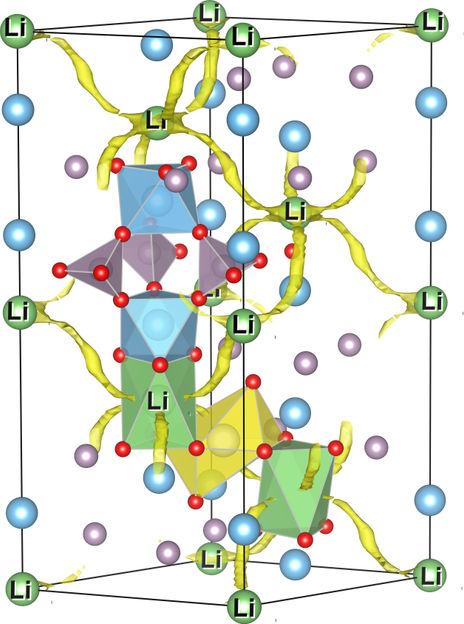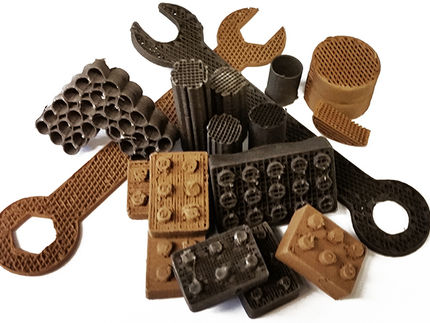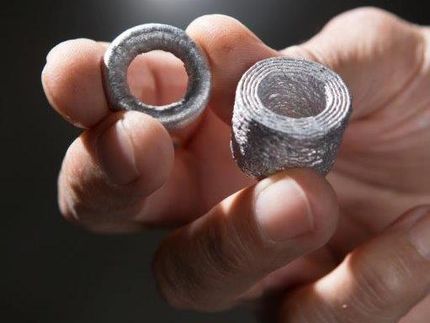Combining 3D printing and metals science leads to stronger, crystal-inspired materials
Imperial materials scientists have created new artificial materials which combine our knowledge of metals with 3D printing. The findings could speed up the use of 3D printed materials in everything from construction and vehicles to medical devices. 3D printing is often used to produce engineering components. The printed components contain lattice structures – patterns of material laid out like a grid, with repeating nodes and connecting struts, which make them lightweight.
However, when traditional types of lattices fail and crack, they do so catastrophically, which limits their use. Researchers suspect that this is because there is only one pattern of lattice throughout the material, and that varying the lattice structures inside could add strength.
Now, inspired by patterns in natural crystals, researchers from Imperial College London and colleagues at the University of Sheffield have introduced features into 3D-printed metals that mimic the structures in crystals, like grains. Lead author Dr Minh-Son Pham , from Imperial’s Department of Materials , said: “By mimicking crystals’ hardening mechanisms, we can substantially strengthen lattice materials produced by 3D printing.”
They found that, when loaded with weight, the new material — which they dub a ‘meta-crystal’ — is far stronger and more damage-tolerant than conventional lattice materials. They also found that the strength of the meta-crystals can be increased by reducing the size of each grain-like lattice region within the structure.
Imperfect perfection
Currently available 3D printed lattices have a single repeating pattern that mimics the structure of a metallic single crystal: the nodes in the lattice are equivalent to the atoms in the single crystal, and the struts are equivalent to the atomic bonds. In each of these structures, the atomic planes, or nodes, are all perfectly aligned.
In some applications, such as the high temperature end of a jet engine, single crystal materials are ideal because of their ability to withstand deformation at extreme temperatures. However, they may not be able to withstand mechanical force.
When the structure is put under pressure, and once the force is enough to cause permanent deformation, the lattice shears along defined planes, and a crack spreads throughout the material. With nothing to inhibit this shearing, the material collapses catastrophically.
However, in the new materials, which have many grains of crystals, the alignment of the atomic planes is changed from grain to grain. In these materials, when a shear force is in one direction, a crack will slow down or stop when it meets a crystal whose atoms are aligned differently from the original crystal. Moreover, it is possible to introduce different patterns to strengthen the materials further to help slow cracks.
Dr Pham said: “Now we can print robust materials, our method could be used in constructing vehicles and buildings, for example. Together with the combination of functional materials such as magnetic materials, the possibilities are endless.”
Original publication
Other news from the department science

Get the chemical industry in your inbox
By submitting this form you agree that LUMITOS AG will send you the newsletter(s) selected above by email. Your data will not be passed on to third parties. Your data will be stored and processed in accordance with our data protection regulations. LUMITOS may contact you by email for the purpose of advertising or market and opinion surveys. You can revoke your consent at any time without giving reasons to LUMITOS AG, Ernst-Augustin-Str. 2, 12489 Berlin, Germany or by e-mail at revoke@lumitos.com with effect for the future. In addition, each email contains a link to unsubscribe from the corresponding newsletter.
Most read news
More news from our other portals
Last viewed contents
Category:Radiation_oncology

Highly promising solid electrolytes for high-performance lithium-ion batteries
Loxapine
Allylic_rearrangement
Category:Amino_sugars






























































